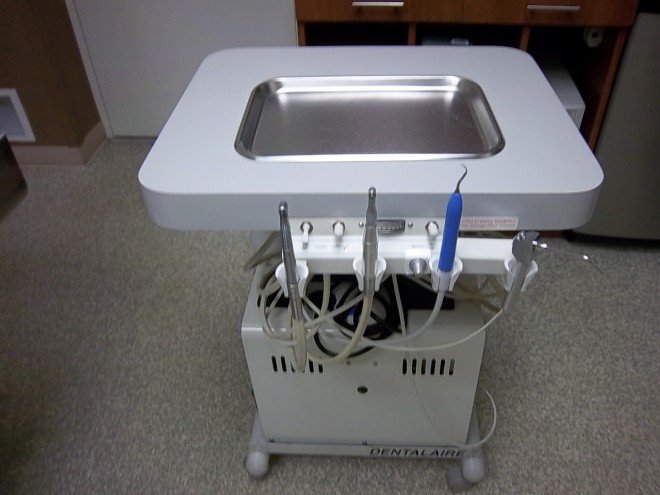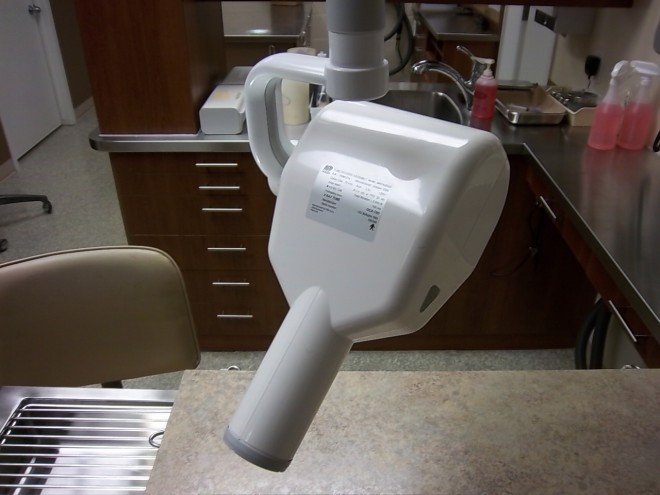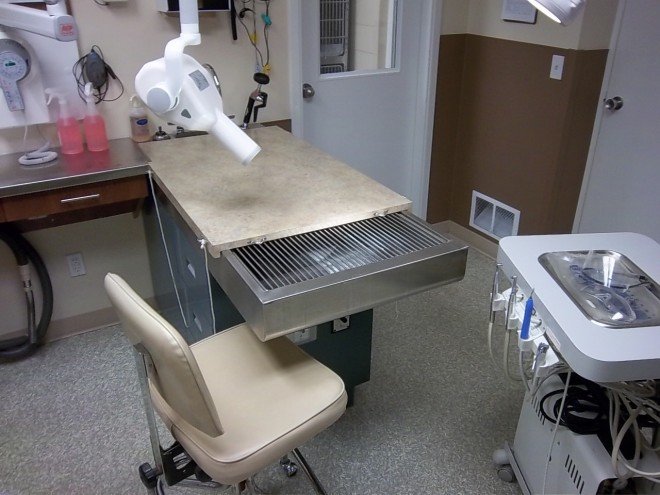According to the American Veterinary Dental Society, 80% of dogs and 70% of cats have oral disease by the age of three years. It is the most frequently diagnosed health problem in pets. Common signs of oral disease include tartar buildup, red and swollen gums, bad breath, changes in eating or chewing habits, pawing at the face and generalized depression.
A veterinarian should evaluate your pet’s dental health at least once a year. We recommend this because bacteria and food debris accumulates around a pet’s teeth and, if left unchecked, will lead to deterioration of the soft tissue and bone surrounding the teeth. This decay results in irreversible periodontal disease and even tooth loss.
There are other reasons why you should pay close attention to your pet’s dental health. Dental disease can affect other organs in the body: bacteria in the mouth can get into the blood stream and may cause serious kidney infections, liver disease, lung disease, and heart valve disease. Oral disease can also indicate that another disease process is occurring elsewhere in a pet’s body. A thorough physical exam combined with appropriate laboratory work can determine if this is the case.
We can recommend and demonstrate preventative measures you can begin at home. Our wellness program emphasizes and explains how you can avoid costly dental procedures with your pet in the future.
Services We Provide
-
Dental Assessment – During every physical exam your pet’s mouth will be thoroughly examined for evidence of periodontal disease, fractured or missing teeth, malocclusions, retained deciduous (baby) teeth, oral tumours, etc. Based on this assessment an oral health care plan will be recommended.
-
Complete Dental Cleaning – We provide complete dental scaling and polishing using modern piezoelectric scaling equipment.
-
Dental X-Rays – Less than 50% of dental disease can be detected without the use of dental x-ray. Dental x-rays are a valuable tool in determining the viability of teeth, grading periodontal disease, diagnosing tooth root abscesses, CNL (cervical neck lesions), cavities, and un-erupted teeth. Dental x-rays are also taken after a tooth is extracted to ensure no root fragments have been left behind. We are excited to have a brand new dental x-ray unit with digital x-ray technology which produces high quality images to make diagnosing dental problems easier.
- Exodontics – We perform surgical extractions of teeth that require removal due to trauma, infection or immume disorders.

-
ASAP – (As safe as possible anaesthesia) All dental procedures are handled with the latest anaesthetic protocols including pre-anaesthetic blood testing and IV fluids for all during anaesthesia. All patients are continuously monitored by our RVT and Veterinarian with respiratory, PO2 , and heart rate monitors.
-
High Riak Patients – We perform dental procedures on pets of all ages and with various serious medical conditions. Every case is evaluated individually and a careful risk benefit evaluation is made.
-
Pain Control – We use a combination of pre-medications, nerve blocks, and take home medication to minimize any discomfort associated with extractions.
-
Client Education – Home care is an important part of maintaining your pet’s oral health. Brushing your pet’s teeth and feeding a diet that aids in minimizing plaque tarter accumulation are two important steps you can take at home.
-
All in-hospital dental procedures are performed in our completely equipped modern dental operatory – The equipment includes a Piezoelectric Scaler, High & Low speed hand pieces with fibro-optic lighting, air/water syringe, digital dental x-ray unit, anaesthetic monitoring equipment and a complete assortment of instruments.






